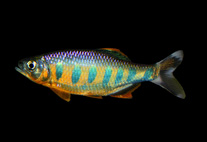Abstract
A new species of commensal shrimp of the genus Typton from holothurians is described and illustrated. The specimens were collected from a single specimen of Holothuria (Halodeima) inornata Semper, 1868 at a depth of 7 m. This is the first record of an association between a shrimp of the genus Typton and echinoderms. With this record, five species of Typton are now known from the eastern Pacific region and four of them are found in the Mexican Pacific. In Typton granulosus sp. nov., the distal part of the outer margin of the uropodal exopod is serrated, a feature shared with T. fapespae Almeida et al., 2014, T. holthuisi De Grave, 2010, T. prionurus Holthuis, 1951, T. serratus Holthuis, 1951, and T. spongicola Costa, 1844. However, the new species can be separated from the other five species of the genus by several morphological characters.

